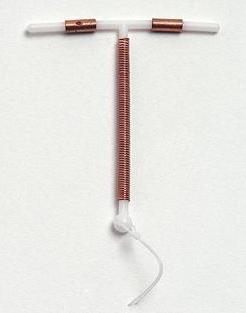ParaGard Disease Interactions
There are 6 disease interactions with ParaGard (copper topical).
- Uterus abnormalities
- Immunodeficiency
- Metabolic disorder
- Renal impairment
- Elimination
- Malabsorption syndromes
Copper (applies to ParaGard) uterus abnormalities
Major Potential Hazard, Moderate plausibility. Applicable conditions: Abnormal Uterine Bleeding, Abdominopelvic Fistulas, Endometrial Dysplasia, Infection - Bacterial/Fungal/Protozoal/Viral
The use of copper for intrauterine contraception is contraindicated when there are abnormalities of the uterus resulting in distortion of the uterine cavity, acute pelvic inflammatory disease, or current behavior suggesting a high risk for pelvic inflammatory disease, known or suspected uterine or cervical malignancy, postpartum endometritis or postabortal endometritis in the past 3 months, known or suspected uterine or cervical malignancy, genital bleeding of unknown etiology, or mucopurulent cervicitis.
Copper (applies to ParaGard) immunodeficiency
Moderate Potential Hazard, Moderate plausibility.
The use of copper for intrauterine contraception should not be placed in women with AIDS unless they are clinically stable on antiretroviral therapy. Little is known about the use of intrauterine devices (IUDs) in women who have illnesses causing serious immunocompromise. Therefore, these women should be carefully monitored for infection if they choose to use an IUD.
Copper (applies to ParaGard) metabolic disorder
Moderate Potential Hazard, Moderate plausibility. Applicable conditions: Metabolic Disorder - Congenital
It is not recommended to administer copper to a patient with Wilson's Disease, a genetic disease of copper metabolism.
Copper (applies to ParaGard) renal impairment
Moderate Potential Hazard, Moderate plausibility. Applicable conditions: Renal Dysfunction
Certain copper injectable formulations contain aluminum that may be toxic. Aluminum may reach toxic levels with prolonged parenteral administration if kidney function is impaired. Patients with impaired kidney function who receive parenteral levels of aluminum at greater than 4 to 5 mcg/kg/day accumulate aluminum at levels associated with central nervous system and bone toxicity. Tissue loading may occur at even lower rates of administration. Care is recommended when using this agent in patients with renal disease.
Copper/manganese (applies to ParaGard) elimination
Moderate Potential Hazard, Moderate plausibility. Applicable conditions: Biliary Obstruction, Liver Disease
The trace elements, copper and manganese, are excreted in the bile. Copper and manganese doses may need to be adjusted, reduced, or omitted in patients with liver disease or biliary obstruction.
Trace metals (applies to ParaGard) malabsorption syndromes
Moderate Potential Hazard, Moderate plausibility.
The trace metals manganese, chromium, copper, selenium, and zinc are absorbed in the GI tract from dietary sources and following administration of oral supplements. GI absorption may be decreased in patients with malabsorption syndromes. Therefore, larger dosages may be required when these supplements are given orally. Parenteral administration may be appropriate.
Switch to professional interaction data
More about ParaGard (copper topical)
- ParaGard consumer information
- Compare alternatives
- Pricing & coupons
- Reviews (1,307)
- Drug images
- Side effects
- Dosage information
- During pregnancy
- Drug class: miscellaneous vaginal agents
Related treatment guides
Drug Interaction Classification
| Highly clinically significant. Avoid combinations; the risk of the interaction outweighs the benefit. | |
| Moderately clinically significant. Usually avoid combinations; use it only under special circumstances. | |
| Minimally clinically significant. Minimize risk; assess risk and consider an alternative drug, take steps to circumvent the interaction risk and/or institute a monitoring plan. | |
| No interaction information available. |
See also:
Further information
Always consult your healthcare provider to ensure the information displayed on this page applies to your personal circumstances.


